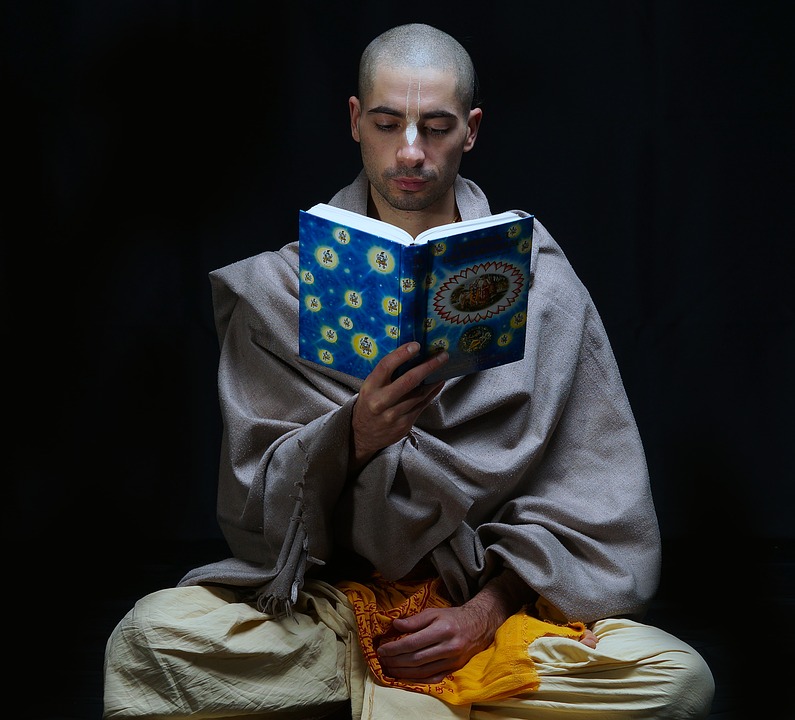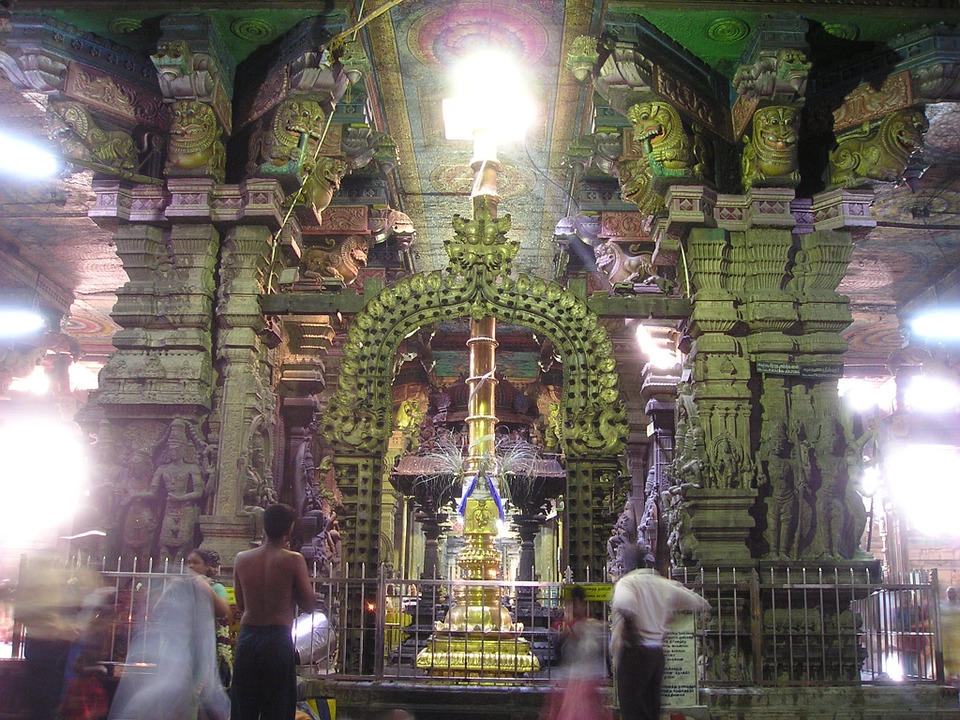When I look at my life, there is nothing more important to me than succeeding in the most crucial objective, namely liberation at death. I have set my goal so high that sometimes I feel like a failure. It can be a bit of a damper and make for a serious disposition. One can end up being hard on oneself sometimes as a result.

If your goal is nothing less than perfection, you may end up a lifelong failure because perfection is up there with the almost impossible. It’s like saying you will not settle for anything less than first place, and that’s not always possible in any challenge.
Because I have been educated in the philosophy of self-realization from the highest source, namely the original texts on yoga and meditation found in the ancient Sanskrit Vedas of India, the bar has been set incredibly high for me. In my twenties I lived in a monastery ashram for ten years as a celibate monk, training daily, sleeping 6 hours a day, rising at 4am all year long. But I was not able to maintain that high standard, and so I sometimes lament my fallen state.
I realized that I still have material desires and drives, like anyone else. And so I feel like I have failed to achieve those lofty goals. Still I have the yearning to make a perfection of my life by attaining liberation to the eternal spiritual world at death. This is called “hoping against hope”. I feel hopelessly like a failure to meet the requirements and yet I still hope anyway that I may achieve it.
My teacher who translated the Sanskrit texts that I study, like Bhagavad Gita, was an elderly man in his seventies who was a monk and exemplary character who set such a high standard that I continue to feel fallen and not up to the required level. Ironically, in youth while training, there are times when one can feel as if you are a pure devotee, and feel quite chuffed with yourself because you are maintaining a high standard as a celibate priest running the monastery. But that is the false ego and puffed up mentality of naive youth.
Today, decades later, I can only look back and see that I have fallen from any temporary level of success I may have attained for a brief while. The material desires all return and one falls victim to the allures of the senses. The mind is so easily bewildered. The solution for me seems to be not to lower the goal, that is not an option, but perhaps to allow for more time, like a few more lifetimes. If I don’t make it back to godhead at the end of this life, then perhaps a few more births are required in order to continue the process of yoga and then return to the eternal abode.
At present I am failing to meet the standards required of a yogi who is aiming for control of the mind and senses in order to attain the goal. When I read chapter six of Bhagavad Gita, I feel how below that exalted standards I actually am. And so it becomes hard for me to write about it because I myself am not able to live up to the requirements taught there.
Even being born in a western family with all the bad habits that we have all through our lives, particularly in ignorant youth, make me feel unqualified in this lifetime, having committed such low class acts, like animal slaughter and flesh eating on a daily basis for years. Fortunately there are examples in history of similar low class people, like myself, who were born in flesh-eating cultures, who later became exemplary in their practice of yoga, and who were appreciated.
Such is the paradoxical nature of the path of self-realization. There is no room for ego, and the standard is incredibly high, yet one still needs to have some degree of self-confidence. It’s a humbling experience overall when you know enough to know that you are still far from knowing what more there is to discover. When you know that you don’t know – it’s like being in limbo.

Nevertheless, the map is available, the text book on consciousness is nicely translated from the Sanskrit into English for us and we can aim high. The goal is clearly stated in the Gita:
यदा विनियतं चित्तमात्मन्येवावतिष्ठते ।
निस्पृह: सर्वकामेभ्यो युक्त इत्युच्यते तदा ॥ १८ ॥
yadā viniyataṁ cittam
ātmany evāvatiṣṭhate
nispṛhaḥ sarva-kāmebhyo
yukta ity ucyate tadā
“When the yogī, by practice of yoga, disciplines his mental activities and becomes situated in Transcendence—devoid of all material desires—he is said to have attained yoga.”
Bhagavad Gita As It Is chapter 6:18 translated by Swami A. C. Bhaktivedanta
(www.prabhupadabooks.com)
In other words, I still need to practice more to make the progress required to cease all material desires, as stated in this verse. One way to do this is to have a higher taste. The Sanskrit term is “param dristva” which is from another verse in the Gita. I have the taste for material enjoyment, but my taste for self-realization and liberation needs to be higher. It’s like enjoying chocolate cake but enjoying more the feeling of a slim and healthy body, which the chocolate cake might interfere with, just as a mundane example.
Obviously as long as we have this material body, we are going to have material desires which are built in, like the desire for food and protection, what to speak of sex and sleep. Some of these desires can be removed but others need to dovetailed into the yoga practice. For example when we eat, as we must, we can first offer the food that we prepare to our deity or god as an offering. This is what is done in temples throughout India. The meal is cooked without tasting it with the understanding and meditation that it is being cooked to offer to the gods. Only thereafter is it considered blessed, so to speak, and then worthy of being eaten.

This kind of food is called “prasadam” which literally means “the mercy of the deity”. We are advised to only eat foodstuffs that have been offered in meditation first. It’s like saying a prayer of offering before eating the food. This technique is presented as a way to spiritualize the material product, and our desires and our mundane life completely. We may still have material desires but they are dovetailed into our spiritual practice. In this way even cooking and eating become part of a spiritual practice.
Similarly anything we do should be done as an offering to the deity. Now only certain foodstuffs are offerable, like those in the mode of goodness or “sattvic” foods, which are mentioned in the Gita as fruit, flowers, leaves, water. You can add to that milk and honey. In other words vegetarian foodstuffs that are free from harm to the animals or plants. Some plants have to be harvested you may argue, and that is precisely why they are first offered before being eaten. If they are not offered, then you incur a sinful reaction by eating them – even plants.

So the standards are high and non-negotiable. No killing of animals. This is to preserve the higher principle of “ahimsa” or non-violence, which is mandatory on the yoga path of self-realization. Add to that the questionable dairy farming practices and you may even want to limit milk products because cows were perhaps harmed in the modern western dairy system. Or you can find milk products from happy cows, so to speak, on gentler farms.
Also the results of your mundane work can be offered first to the deity, your divinity, so that they too can be purified of the bad karma they may have around them when you do the work to make the money in today’s society. Ideally we should be engaged in karma-free activity, but that may not always be possible. So the concept of offering everything first in sacrifice to your god or divinity, that is the secret to dovetailing your material activities into spiritually uplifting practices.
We all have material desires as long as we have the body, but we can link them up in our yoga practice by making offerings first of whatever we desire, and then partaking of the offered substances, whether food or money, for example. Some things can’t be offered so we avoid those altogether. This is how we gradually elevate our mundane lives and material natures upward to the spiritualized level. We add these small meditations, rituals or ceremonies of offering to our divinity, to our god. And we become purified as a result of this type of perspective added to our lives.
(images pixabay)
Congratulations @julescape! You have completed the following achievement on the Hive blockchain and have been rewarded with new badge(s) :
Your next target is to reach 30000 upvotes.
You can view your badges on your board and compare yourself to others in the Ranking
If you no longer want to receive notifications, reply to this comment with the word
STOPCheck out the last post from @hivebuzz:
Support the HiveBuzz project. Vote for our proposal!